
Sai Yok National Park: A Symphony of Nature and History
Explore Sai Yok National Park in Thailand: A blend of breathtaking waterfalls, rich wildlife, and historical landmarks in the heart of Kanchanaburi Province.
Nestled in the western region of Thailand, Sai Yok National Park is a haven for nature lovers and history enthusiasts alike. The park, located in the Kanchanaburi Province, is renowned for its lush forests, stunning waterfalls, and rich biodiversity. Here, visitors can explore the serene Sai Yok Noi and Sai Yok Yai waterfalls, which offer perfect spots for picnicking and swimming. The park's dense jungle is home to various wildlife species, including the rare Kitti's hog-nosed bat, the world's smallest mammal. History buffs will be captivated by the remnants of the Death Railway, a poignant reminder of World War II. The railway, built by Allied prisoners of war, runs through the park and offers a glimpse into a turbulent past. A visit to Hellfire Pass, a section of the railway carved through rock, is both sobering and fascinating. For those seeking adventure, Sai Yok National Park offers numerous trekking trails that wind through its verdant landscape. The park is also a great spot for bird watching, with over 200 species recorded. If you prefer a more leisurely experience, consider a bamboo raft ride along the Kwai Noi River, which flows through the park and provides stunning views of the surrounding scenery.
Local tips in Sai Yok National Park
- Visit between November and February for the best weather conditions.
- Wear comfortable walking shoes as some trails can be steep and slippery.
- Bring insect repellent to protect against mosquitoes.
- Hire a local guide for a more informative trekking experience.
- Pack a picnic and enjoy it by the waterfalls.
Sai Yok National Park: A Symphony of Nature and History
Nestled in the western region of Thailand, Sai Yok National Park is a haven for nature lovers and history enthusiasts alike. The park, located in the Kanchanaburi Province, is renowned for its lush forests, stunning waterfalls, and rich biodiversity. Here, visitors can explore the serene Sai Yok Noi and Sai Yok Yai waterfalls, which offer perfect spots for picnicking and swimming. The park's dense jungle is home to various wildlife species, including the rare Kitti's hog-nosed bat, the world's smallest mammal. History buffs will be captivated by the remnants of the Death Railway, a poignant reminder of World War II. The railway, built by Allied prisoners of war, runs through the park and offers a glimpse into a turbulent past. A visit to Hellfire Pass, a section of the railway carved through rock, is both sobering and fascinating. For those seeking adventure, Sai Yok National Park offers numerous trekking trails that wind through its verdant landscape. The park is also a great spot for bird watching, with over 200 species recorded. If you prefer a more leisurely experience, consider a bamboo raft ride along the Kwai Noi River, which flows through the park and provides stunning views of the surrounding scenery.
When is the best time to go to Sai Yok National Park?
Iconic landmarks you can’t miss
Sai Yok Noi Waterfall (Khao Pang Waterfall)
Discover the breathtaking beauty of Sai Yok Noi Waterfall, a serene oasis in Thailand's Sai Yok National Park, perfect for nature lovers and adventurers.
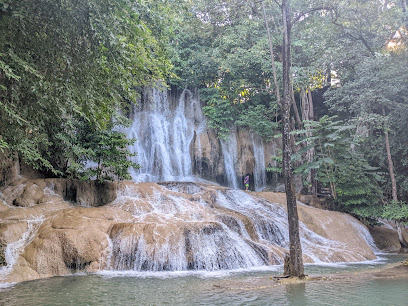
Namtok Sai Yok Noi (Namtok Khao Pang)
Explore the breathtaking Namtok Sai Yok Noi waterfall in Kanchanaburi, Thailand, surrounded by lush nature and stunning landscapes.
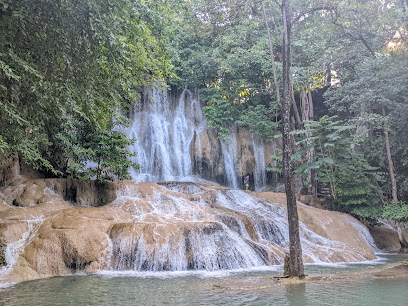
Mallika R.E 124
Discover the vibrant cultural tapestry of Kanchanaburi at Mallika R.E 124, where tradition meets modern artistry in a stunning park setting.
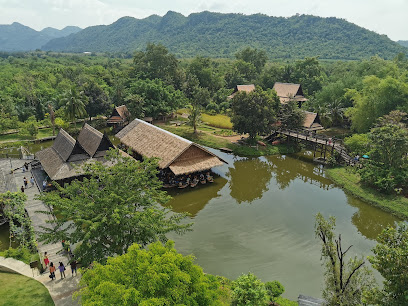
Hellfire Pass Interpretive Centre
Explore the history of the Thai-Burma Railway at Hellfire Pass Interpretive Centre, where stories of sacrifice and resilience come to life.
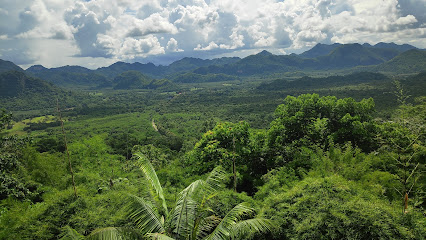
Mueang Sing Historical Park
Explore the ancient Khmer ruins and lush landscapes of Mueang Sing Historical Park, a captivating journey through Thailand's rich cultural heritage.
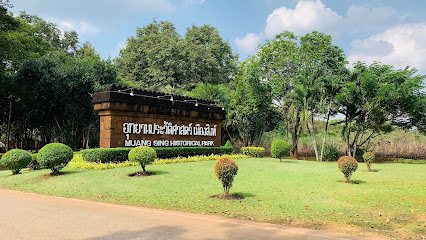
Krasae Cave
Explore the serene beauty and rich history of Krasae Cave, a stunning landmark in Kanchanaburi, Thailand, offering a unique blend of nature and spirituality.
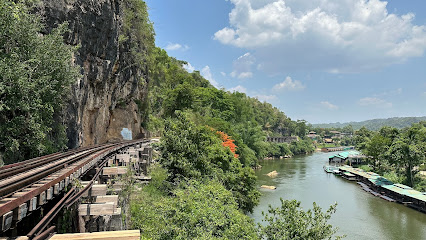
Hellfire Pass (Konyu Cutting), Thai-Burma Death Railway
Discover the haunting history of Hellfire Pass, a vital memorial to the resilience of POWs in WWII, nestled in Thailand's stunning Kanchanaburi province.
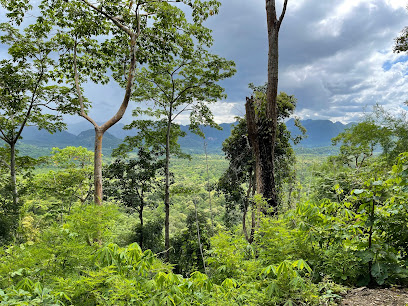
Sai Yok Elephant Park
Explore Sai Yok Elephant Park, where ethical wildlife encounters meet stunning natural beauty in Kanchanaburi, Thailand.
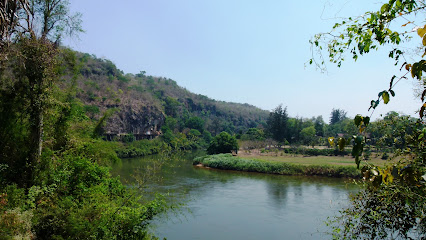
Tham Lawa Cave
Discover the breathtaking beauty and adventure of Tham Lawa Cave in Kanchanaburi, a natural wonder within a national park, rich in history and biodiversity.
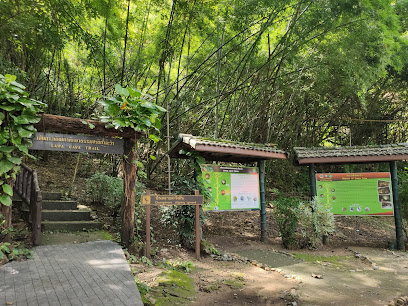
Sai Yok Yai Waterfall
Discover the beauty of Sai Yok Yai Waterfall in Kanchanaburi, Thailand—a tranquil paradise featuring cascading waterfalls and rich historical significance.

Tiger temple
Discover the enchanting Tiger Temple in Kanchanaburi, a unique wildlife sanctuary offering up-close encounters with majestic tigers and a commitment to conservation.

Cave Dao Wadung
Discover the captivating beauty of Cave Dao Wadung, a stunning cave in Sai Yok National Park, Kanchanaburi, featuring mesmerizing rock formations and rich history.
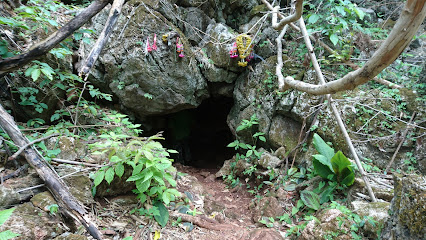
Prisoners of War Memorial
Explore the rich history and solemn beauty of the Prisoners of War Memorial in Kanchanaburi, a must-visit destination for history lovers and reflective travelers.
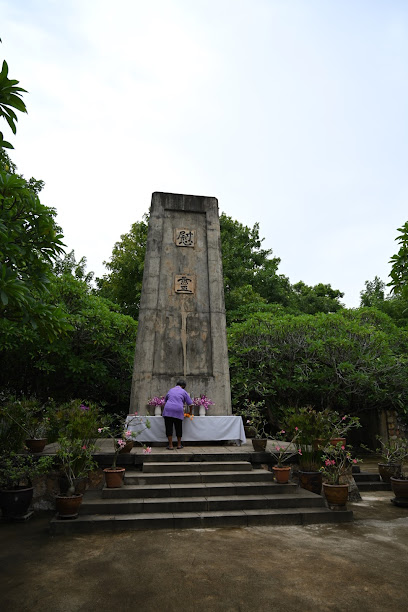
Unmissable attractions to see
Erawan National Park
Explore the enchanting Erawan National Park, a gem of nature in Thailand, known for its stunning waterfalls and rich biodiversity.
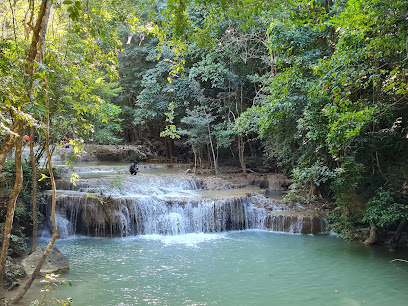
Huai Mae Khamin Waterfall
Explore the stunning Huai Mae Khamin Waterfall in Kanchanaburi, a natural paradise for adventure seekers and nature lovers alike.
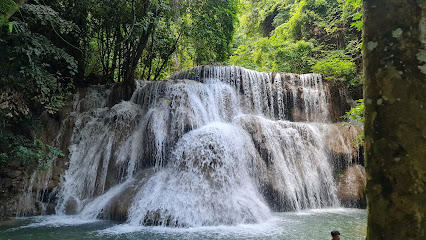
The Hindad hot spring
Discover tranquility at The Hindad Hot Spring, a natural oasis in Kanchanaburi offering soothing mineral waters and stunning landscapes.
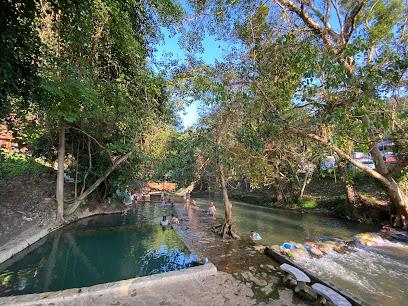
Maha Wang Elephant Camp
Explore the magical world of elephants at Maha Wang Elephant Camp - a sanctuary for wildlife lovers and an unforgettable adventure in Kanchanaburi.
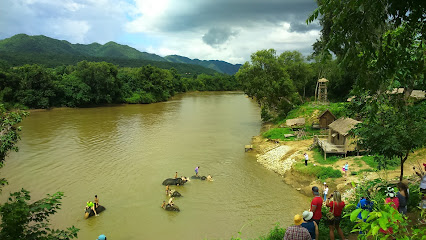
Lin Thin Hot Springs
Experience rejuvenation in the heart of Kanchanaburi at Lin Thin Hot Springs, where nature and wellness meet for a serene escape.
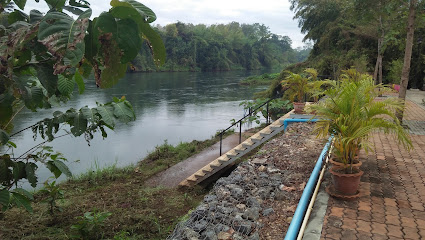
Rock Valley Hot Springs and Fish Spa
Experience the serene beauty and therapeutic benefits of Rock Valley Hot Springs and Fish Spa in Kanchanaburi, Thailand, for a rejuvenating escape.
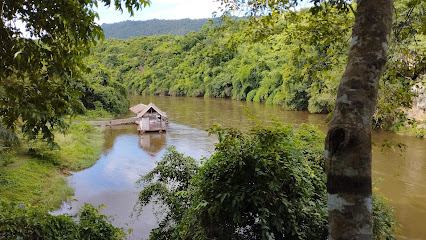
Tham Lawa Cave
Explore the enchanting Tham Lawa Cave, a geological wonder in Kanchanaburi National Park, offering breathtaking scenery and adventure for all visitors.
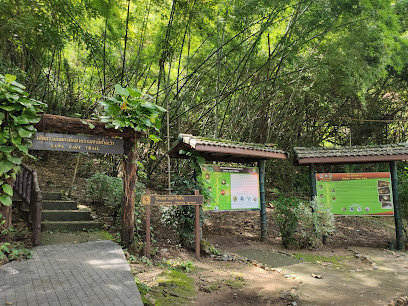
Pha Tat Waterfall
Experience the beauty of Pha Tat Waterfall in Kanchanaburi, a natural oasis perfect for relaxation, adventure, and unforgettable memories.
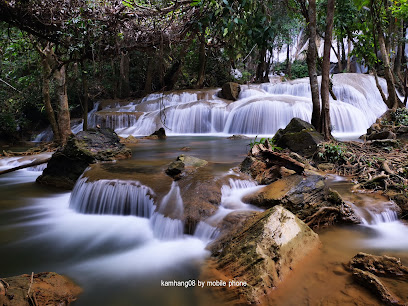
ATV คุ้งแควน้อย
Explore the breathtaking landscapes of Kanchanaburi with thrilling ATV adventures, offering unforgettable experiences for all adventure enthusiasts.
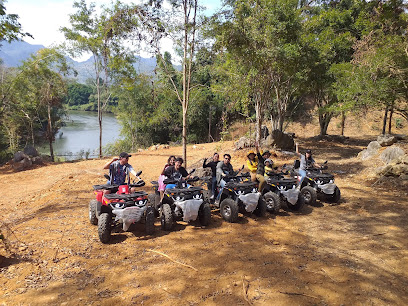
Tree Top Adventure Park Kanchanaburi
Discover adventure in the heart of nature at Tree Top Adventure Park Kanchanaburi, where thrilling zip lines and rope courses await.
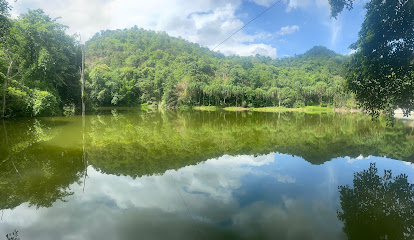
Tiger temple
Experience the awe of the Tiger Temple in Kanchanaburi, where conservation meets adventure in a serene wildlife sanctuary.
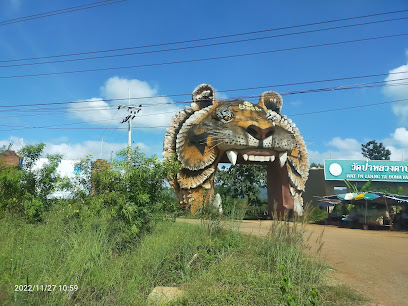
แพกิ่งไผ่ ไทรโยค
Experience the serene beauty of Sai Yok in Kanchanaburi, where nature meets adventure in a tranquil setting perfect for all travelers.
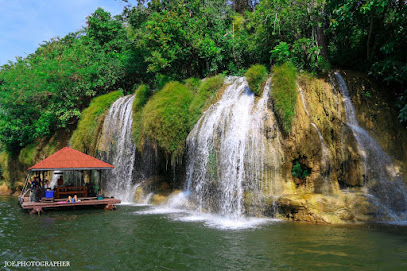
Pha Sawan Waterfall
Experience the serene beauty of Pha Sawan Waterfall, a must-visit natural wonder in Kanchanaburi, Thailand, perfect for nature lovers and adventure seekers.
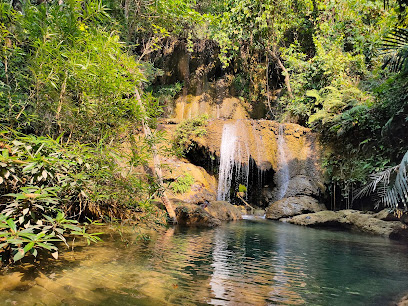
Cave Dao Wadung
Discover the enchanting beauty of Cave Dao Wadung in Sai Yok, Kanchanaburi, where stunning limestone formations and rich natural landscapes await every traveler.
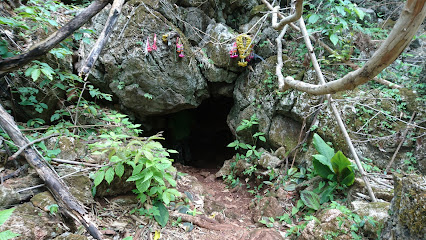
Wat Mae Nam Noi
Explore the serene beauty of Wat Mae Nam Noi, a Buddhist temple in Kanchanaburi offering tranquility and cultural richness in a breathtaking setting.
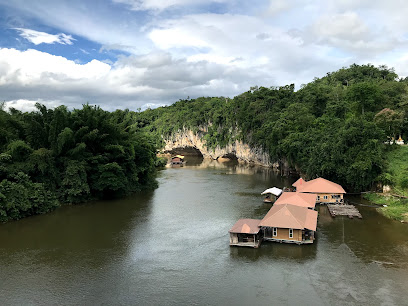
Essential places to dine
ร้านอาหารบ้านเอญ่า (Baan-Aaya Coffee and Restaurant)
Discover authentic Thai flavors at Baan-Aaya Coffee and Restaurant in Kanchanaburi—where every meal is surrounded by nature's beauty.
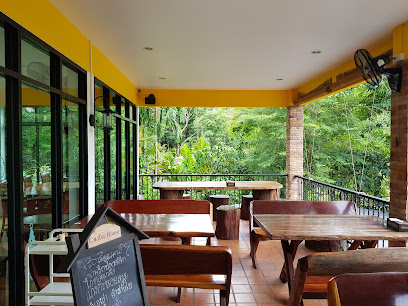
Sai Yok Restaurant
Discover Sai Yok Restaurant: A riverside haven offering authentic Thai dishes and stunning views along the iconic River Kwai.

Markets, malls and hidden boutiques
Sai Yok National Park
Explore the breathtaking landscapes and rich biodiversity of Sai Yok National Park, a true gem in Thailand's natural wonders.
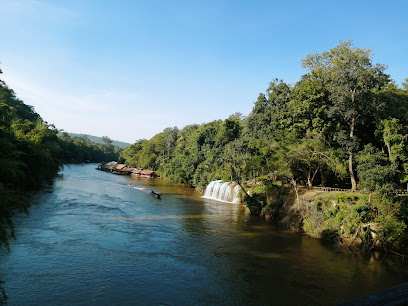
ร้านบัวแก้ว
Explore the local flavors of Thailand at ร้านบัวแก้ว, a must-visit grocery store in Sai Yok, Kanchanaburi, offering fresh produce and traditional snacks.
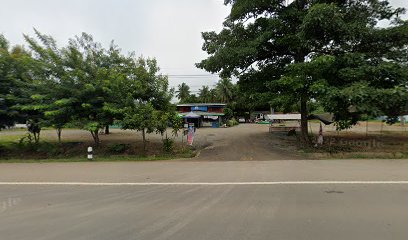
7-Eleven
Experience the convenience of 7-Eleven in Sai Yok, Kanchanaburi – your essential stop for snacks, drinks, and local flavors, open 24/7.
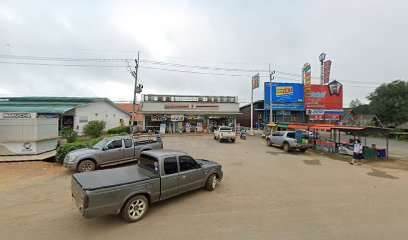
นุ๊กะนัดของชำ
Discover the essence of Kanchanaburi at นุ๊กะนัดของชำ, where local flavors and friendly faces await.
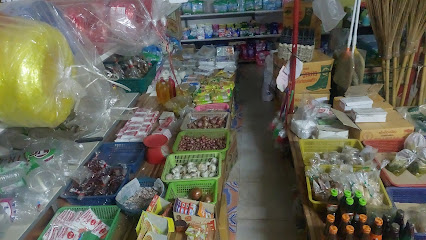
7วันมินิมาร์ท
Explore local flavors and essentials at 7วันมินิมาร์ท, your friendly grocery store in the heart of Sai Yok, Kanchanaburi, Thailand.
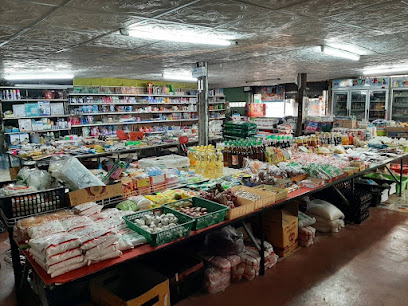
กาญจน์เกษตร
Experience the flavors of Kanchanaburi at กาญจน์เกษตร, your doorway to local Thai produce and culinary delights.

อำนาจพันธ์ไม้
Discover the authentic flavors of Thailand at อำนาจพันธ์ไม้, your local grocery store in Sai Yok, Kanchanaburi.
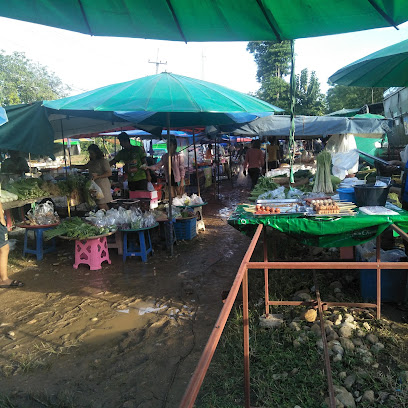
ชิมกาแฟ แลภูเขา
Discover tranquility and taste at 'ชิมกาแฟ แลภูเขา', your perfect coffee shop in the heart of Kanchanaburi's stunning landscapes.
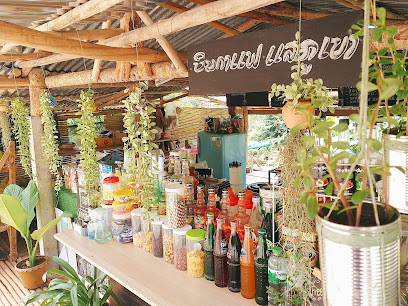
นุ้ย ทุ่งก้างย่าง
Explore the authentic flavors of Thailand at นุ้ย ทุ่งก้างย่าง, your go-to grocery store in Sai Yok, Kanchanaburi for local produce and snacks.
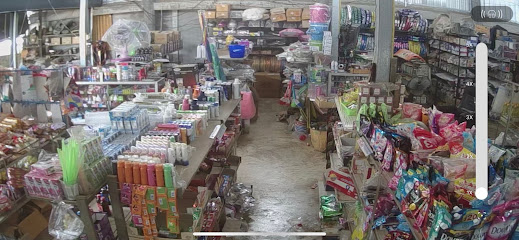
ร้านเมียด ขายของชำและอาหารสด
Experience the authentic local flavors at ร้านเมียด, Kanchanaburi's go-to grocery store for fresh produce and traditional snacks.
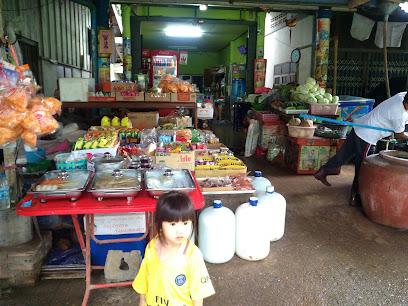
ร้านป้าแป้วของชำ
Explore the vibrant flavors of Thailand at ร้านป้าแป้วของชำ, a charming grocery store in Sai Yok District, Kanchanaburi, perfect for local delights.
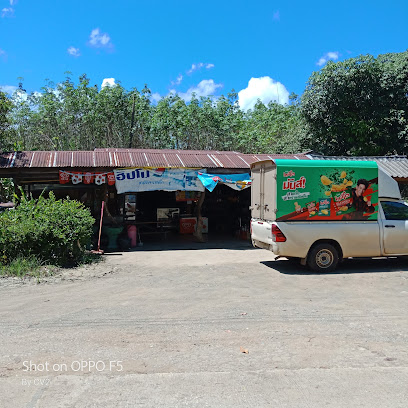
Sakhon Shop 2
Discover the authentic flavors of Thailand at Sakhon Shop 2, a charming grocery store in Sai Yok, Kanchanaburi, perfect for local delicacies and essentials.
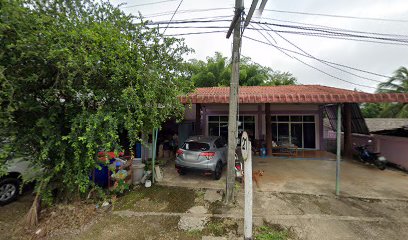
Express shopping
Discover the charm of Kanchanaburi at Express Shopping, where local treasures and authentic Thai goods await every traveler.

ยุสะดวกซื้อ
Discover the best convenience store in Sai Yok for all your travel needs, offering snacks, drinks, and local delights.
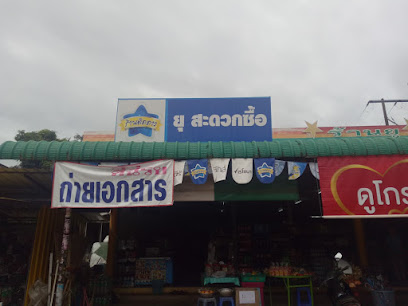
ร้านโชห่วย Local Grocery Store
Explore the diverse culinary delights of Thailand at ร้านโชห่วย, a local grocery store offering authentic Asian ingredients and snacks.
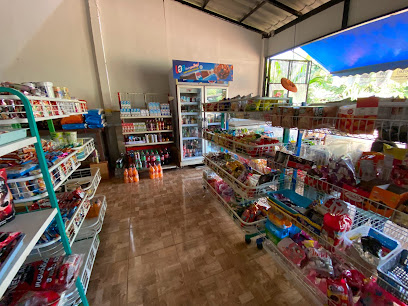
Essential bars & hidden hideouts
Baantangrimkwae
Discover the rich flavors of Thai cuisine at Baantangrimkwae, a stunning restaurant and hotel in Sai Yok, Kanchanaburi, surrounded by nature's beauty.
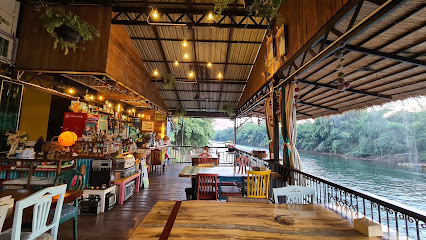
Pirom Park
Experience the best of nature and Thai cuisine at Pirom Park, a serene restaurant in Kanchanaburi surrounded by lush greenery.
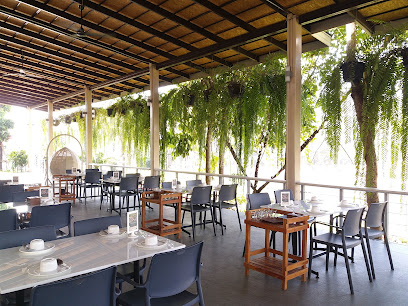
U Terrace Riverkwai Cafe & Cuisine
Experience the essence of Thai hospitality at U Terrace Riverkwai Cafe & Cuisine with stunning riverside views and delightful local delicacies.
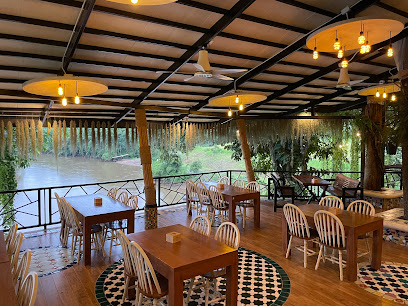
Aussie Rules Bar
Aussie Rules Bar: Dive into Kanchanaburi's vibrant nightlife with affordable drinks, live sports, and a lively atmosphere that welcomes all.

Khrua Sakon
Experience authentic Thai flavors at Khrua Sakon, a culinary gem in Sai Yok District, Kanchanaburi, surrounded by stunning natural beauty.
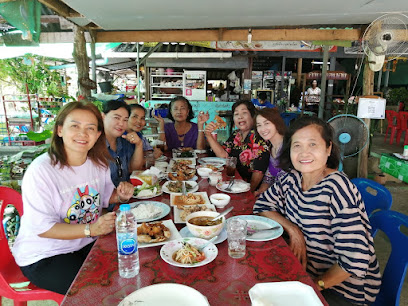
BAR TID KHAO
Discover the charm of BAR TID KHAO in Kanchanaburi, where unique cocktails and friendly service create unforgettable moments.
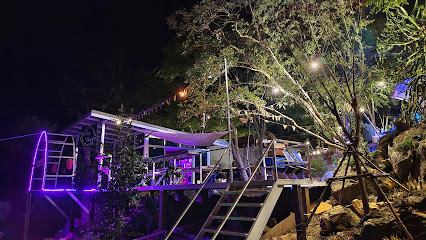
Chill@Garden
Discover the serene beauty and delicious flavors at Chill@Garden, Kanchanaburi's perfect bar and restaurant oasis in nature.
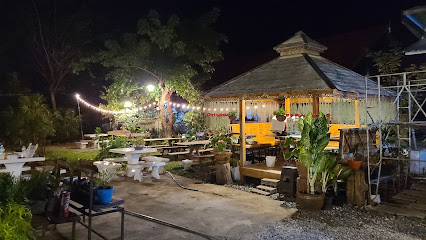
แพราชวัลลภ
Discover the flavors of Thailand at แพราชวัลลภ, a unique dining experience in the heart of Sai Yok, Kanchanaburi.
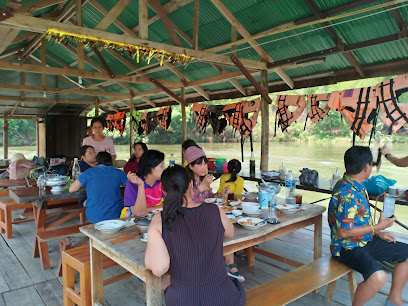
ร้าน 199
Discover the perfect blend of relaxation and local charm at ร้าน 199 in Sai Yok, Kanchanaburi, where every sip is a taste of Thailand.
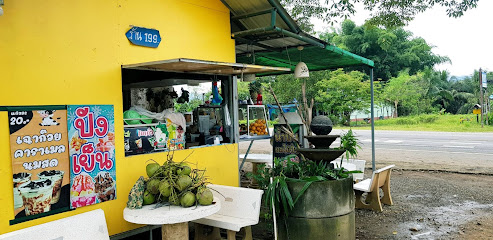
ร้าน เล่นเล่น ลิ่นถิ่น
Experience authentic Thai flavors at ร้าน เล่นเล่น ลิ่นถิ่น in the heart of Sai Yok, Kanchanaburi – a culinary gem for every traveler.
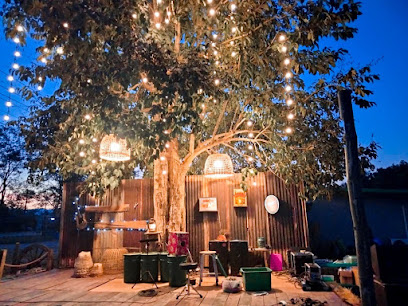
Saiyok Winner
Savor authentic Thai cuisine in the scenic Sai Yok District, where traditional flavors meet breathtaking surroundings.

Taecher BAR
Discover the lively ambiance of Taecher BAR in Kanchanaburi, where local culture and refreshing drinks create unforgettable memories.

เทพพิมาน กาแฟสด สเต็ก สปาเก็ตตี้
Discover Thappiman Coffee in Sai Yok, Kanchanaburi – a delightful blend of fresh coffee, steaks, and spaghetti in a scenic setting.
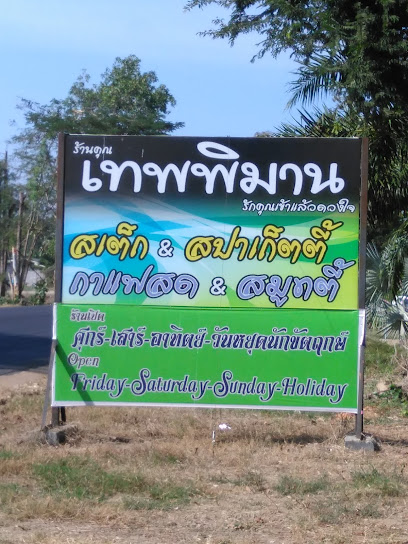
ร้านอาหารถ้ำกระแซ โดยนายชูเกียรติ วิวัฎฏ์กุลธร
Discover authentic Thai flavors in a picturesque setting at ร้านอาหารถ้ำกระแซ in Sai Yok, Kanchanaburi.
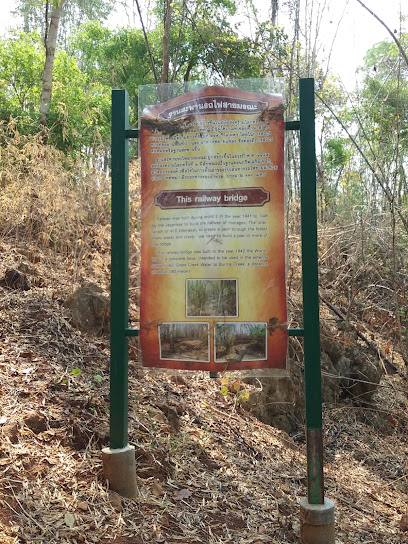
เนรมิต
Experience the authentic flavors of Thai cuisine at เนรมิต, nestled in the scenic Sai Yok District of Kanchanaburi.
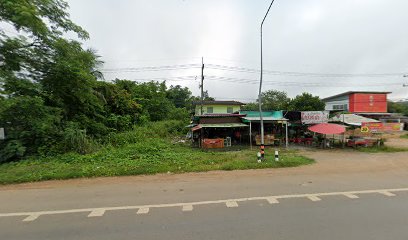
Local Phrases about Sai Yok National Park
-
- Helloสวัสดี
[sawasdee] - Goodbyeลาก่อน
[laa kon] - Yesใช่
[chai] - Noไม่ใช่
[mai chai] - Please/You're welcomeโปรด/ยินดีต้อนรับ
[proht/yin dee dton rub] - Thank youขอบคุณ
[kob khun] - Excuse me/Sorryขอโทษ
[kor toht] - How are you?สบายดีไหม
[sabai dee mai] - Fine. And you?สบายดีครับ และคุณ
[sabai dee khrap lae khun] - Do you speak English?คุณพูดภาษาอังกฤษได้ไหม
[khun poot paa saa ang-grit dai mai] - I don't understandฉันไม่เข้าใจ
[chan mai khao jai]
- Helloสวัสดี
-
- I'd like to see the menu, pleaseขอดูเมนูหน่อยค่ะ
[kor doo menu noi kha] - I don't eat meatฉันไม่กินเนื้อ
[chan mai kin nuea] - Cheers!ไชโย
[chai yo] - I would like to pay, pleaseขอจ่ายเงินค่ะ
[kor jai ngern kha]
- I'd like to see the menu, pleaseขอดูเมนูหน่อยค่ะ
-
- Help!ช่วยด้วย
[chuai duay] - Go away!ไปห่างๆ
[pai yang yang] - Call the Police!โทรตำรวจ
[tor tamruat] - Call a doctor!โทรหมอ
[tor mor] - I'm lostฉันหลงทาง
[chan long tang] - I'm illฉันไม่สบาย
[chan mai sabai]
- Help!ช่วยด้วย
-
- I'd like to buy...ฉันอยากซื้อ...
[chan yak sue...] - I'm just lookingฉันเพียงแค่ดู
[chan piang kae doo] - How much is it?ราคาเท่าไหร่
[ra kha thao rai] - That's too expensiveแพงไป
[paeng pai] - Can you lower the price?ลดราคาได้ไหม
[lot ra kha dai mai]
- I'd like to buy...ฉันอยากซื้อ...
-
- What time is it?เวลาเท่าไหร่
[welaa thao rai] - It's one o'clockเป็นโมงเดียว
[pen mong diao] - Half past (10)สามสิบครึ่ง
[sam sip khrung] - Morningเช้า
[chao] - Afternoonบ่าย
[bai] - Eveningเย็น
[yen] - Yesterdayเมื่อวาน
[meua wan] - Todayวันนี้
[wan nee] - Tomorrowพรุ่งนี้
[proong nee] - 1หนึ่ง
[neung] - 2สอง
[song] - 3สาม
[sam] - 4สี่
[see] - 5ห้า
[ha] - 6หก
[hok] - 7เจ็ด
[jet] - 8แปด
[bpaet] - 9เก้า
[gao] - 10สิบ
[sip]
- What time is it?เวลาเท่าไหร่
-
- Where's a/the...?...อยู่ที่ไหน
[...yu tee nai] - What's the address?ที่อยู่คืออะไร
[tee yu keu arai] - Can you show me (on the map)?คุณแสดงให้ฉันได้ไหม
[khun sa-dang hai chan dai mai] - When's the next (bus)?เวลาเที่ยงคืน
[welaa thiang keun] - A ticket (to ....)ตั๋วไป...
[dtua bai...]
- Where's a/the...?...อยู่ที่ไหน
History of Sai Yok National Park
-
Sai Yok National Park, located in Kanchanaburi Province, is known for its dense forests and stunning waterfalls. The area has a rich history dating back to prehistoric times, with evidence of early human settlements found in various caves. The Mon people, one of the earliest known inhabitants, have left their mark on the region through cultural artifacts and ancient structures.
-
During the 9th to 13th centuries, the Khmer Empire extended its influence over much of Southeast Asia, including parts of what is now Thailand. Sai Yok National Park bears remnants of this era, including ancient ruins and inscriptions that hint at the Khmer's architectural and cultural influence in the region.
-
Sai Yok National Park is perhaps most famously known for its connection to the infamous Death Railway, constructed during World War II. The railway was built by Allied prisoners of war under brutal conditions to support the Japanese war effort. The Hellfire Pass, a particularly grueling section of the railway, is located within the park and now serves as a memorial to those who suffered and died during its construction.
-
Following World War II, the Thai government began efforts to recover and restore the natural beauty of Sai Yok. The park was officially established in 1980 and has since become a protected area aimed at conserving its unique ecosystems and wildlife. This period also saw the development of infrastructure to support eco-tourism, balancing visitor access with environmental preservation.
-
Sai Yok National Park holds cultural significance for the local communities, including the Mon and Karen ethnic groups. Traditional festivals and ceremonies are still practiced within the park, offering a glimpse into the rich cultural tapestry of the region. These events often include traditional music, dance, and religious rituals that have been passed down through generations.
Sai Yok National Park Essentials
-
Sai Yok National Park is located in Kanchanaburi Province, approximately 100 kilometers northwest of Bangkok. The most common way to get there is by car, which takes around 2-3 hours. Alternatively, you can take a bus from Bangkok's Southern Bus Terminal (Sai Tai Mai) to Kanchanaburi town, and then continue by local bus or taxi to the park. There are also train services from Bangkok's Thonburi Railway Station to Kanchanaburi, followed by a local bus or taxi.
-
Within Sai Yok National Park, transportation options include renting motorbikes or bicycles, which allows you to explore at your own pace. Local taxis and songthaews (shared pickup trucks) are also available for hire. For those who prefer guided tours, several operators offer day trips and tours from Kanchanaburi town.
-
The official currency in Thailand is the Thai Baht (THB). Credit and debit cards are accepted at larger establishments, but it's advisable to carry cash for smaller transactions such as entrance fees and local markets. ATMs are available in Kanchanaburi town, so it is a good idea to withdraw sufficient cash before heading to the park.
-
Sai Yok National Park is generally safe for tourists. However, standard precautions should be taken, such as securing your belongings and avoiding isolated areas after dark. While the park itself does not have high-crime areas targeting tourists, it is always best to stay vigilant and aware of your surroundings.
-
In case of emergency, dial 191 for police assistance and 1669 for medical emergencies. The nearest hospital is in Kanchanaburi town, about an hour's drive from the park. It is highly recommended to have travel insurance that covers medical emergencies. For minor health issues, carry a basic first-aid kit and essential medications.
-
Fashion: Dress modestly, especially when visiting temples or religious sites. Light, breathable clothing is recommended due to the tropical climate. Religion: Show respect at religious sites by removing shoes and covering your shoulders and knees. Public Transport: Be respectful and offer your seat to elderly passengers. Avoid loud conversations and eating on public transport. Greetings: A traditional Thai greeting, the 'wai,' involves a slight bow with palms pressed together. Eating & Drinking: Try local dishes and accept food offerings graciously. Avoid pointing your feet at people or religious objects, and never touch someone's head.
-
To experience Sai Yok National Park like a local, consider visiting the park during weekdays to avoid crowds. Engage with park rangers and local guides to learn more about the area's flora and fauna. Don't miss the Lawa Cave and the Sai Yok Noi Waterfall. For a unique experience, take a boat ride on the Kwai River and visit the historical Hellfire Pass.
Trending Landmarks in Sai Yok National Park
-
Sai Yok Noi Waterfall (Khao Pang Waterfall)
-
Namtok Sai Yok Noi (Namtok Khao Pang)
-
Mallika R.E 124
-
Hellfire Pass Interpretive Centre
-
Mueang Sing Historical Park
-
Krasae Cave
-
Hellfire Pass (Konyu Cutting), Thai-Burma Death Railway
-
Sai Yok Elephant Park
-
Tham Lawa Cave
-
Sai Yok Yai Waterfall
-
Tiger temple
-
Cave Dao Wadung
-
Prisoners of War Memorial
Nearby Cities to Sai Yok National Park
-
Things To Do in Ayutthaya
-
Things To Do in Bangkok
-
Things To Do in Samut Prakan
-
Things To Do in Hua Hin
-
Things To Do in Pattaya
-
Things To Do in Hpa-An
-
Things To Do in Sukhothai
-
Things To Do in Rayong
-
Things To Do in Nakhon Ratchasima
-
Things To Do in Kyaiktiyo
-
Things To Do in Yangon
-
Things To Do in Chumphon
-
Things To Do in Loei
-
Things To Do in Trat
-
Things To Do in Chiang Mai










